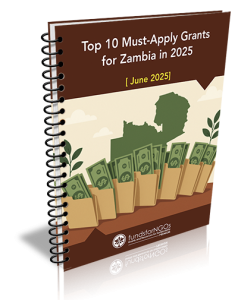In the ever-evolving landscape of nonprofit funding, traditional methods are often not enough to sustain the growing needs of communities and causes. As NGOs strive to make a difference, they must embrace innovative fundraising ideas that not only attract donations but also engage supporters in meaningful ways. The rise of technology and social media has opened up new avenues for fundraising, allowing organizations to reach wider audiences and create impactful campaigns.
This article explores several innovative fundraising strategies that NGOs can implement to enhance their financial sustainability and community engagement. The importance of diversifying funding sources cannot be overstated. Relying solely on grants or donations from a small group of supporters can leave organizations vulnerable to fluctuations in funding.
By exploring creative fundraising ideas, NGOs can tap into new donor bases, foster long-term relationships, and build a robust financial foundation. From crowdfunding campaigns to corporate partnerships, the possibilities are vast. This article will delve into various innovative strategies that can help NGOs not only meet their financial goals but also amplify their mission and impact.
Crowdfunding Campaigns
Creating a Compelling Campaign
The key to a successful crowdfunding campaign lies in crafting a narrative that resonates with potential donors, highlighting the urgency and importance of the cause. To maximize the effectiveness of crowdfunding, NGOs should consider setting specific funding goals and timelines. This creates a sense of urgency and encourages donors to act quickly.
Strategies for Success
Additionally, offering incentives such as exclusive updates, merchandise, or recognition can motivate supporters to contribute more. Real-world examples abound; for instance, the nonprofit organization Charity: Water has successfully utilized crowdfunding to fund clean water projects around the world. By sharing powerful stories and transparent financial reporting, they have built a loyal donor base that continues to support their mission.
Building a Loyal Donor Base
The success of crowdfunding campaigns also depends on the ability of NGOs to build and maintain a loyal donor base. This can be achieved by providing regular updates on the progress of the project, acknowledging the contributions of donors, and demonstrating the impact of their donations. By doing so, NGOs can foster a sense of community and encourage repeat donations.
Best Practices for NGOs
To get the most out of crowdfunding, NGOs should be aware of best practices in the field. This includes setting realistic funding goals, creating engaging content, and leveraging social media to promote their campaigns. By following these guidelines and staying up-to-date with the latest trends and technologies, NGOs can unlock the full potential of crowdfunding and achieve their fundraising goals.
Virtual Events and Online Auctions
The shift towards virtual events has transformed the way NGOs engage with their supporters. Online events such as webinars, workshops, and virtual galas not only provide opportunities for fundraising but also foster community building and awareness around important issues. By utilizing platforms like Zoom or Facebook Live, organizations can reach participants from all over the world without the constraints of geographical limitations.
These events can be tailored to suit various audiences, whether it’s an educational seminar on a relevant topic or a fun-filled virtual gala with entertainment. Online auctions are another innovative fundraising strategy that has gained popularity in recent years. NGOs can curate unique items or experiences donated by local businesses or supporters and auction them off in a virtual setting.
This not only raises funds but also promotes local businesses and strengthens community ties. For example, the American Cancer Society has successfully hosted virtual galas featuring live auctions, where attendees bid on exclusive items while enjoying entertainment from home. By creating an engaging online experience, NGOs can keep supporters connected and invested in their mission.
Corporate Partnerships and Sponsorships
Building partnerships with corporations can be a game-changer for NGOs seeking sustainable funding sources. Corporate sponsorships not only provide financial support but also enhance an organization’s credibility and visibility within the community. To establish successful partnerships, NGOs should identify companies whose values align with their mission and approach them with tailored proposals that outline mutual benefits.
This could include co-branded campaigns, employee engagement opportunities, or cause marketing initiatives that resonate with both the corporation’s goals and the NGO’s mission. A prime example of effective corporate partnership is TOMS Shoes, which has built its brand around social responsibility by donating a pair of shoes for every pair sold. This model not only drives sales but also engages customers who want to contribute to a meaningful cause.
NGOs can learn from such examples by creating compelling narratives that showcase the impact of corporate contributions while providing tangible benefits for the sponsoring company, such as increased brand loyalty and positive public relations.
Peer-to-Peer Fundraising
Peer-to-peer fundraising empowers supporters to take an active role in raising funds for an NGO’s cause. By encouraging individuals to create their own fundraising pages and solicit donations from their networks, organizations can significantly expand their reach and donor base. This method leverages personal connections and social influence, making it more likely for potential donors to contribute when asked by someone they know.
Platforms like Classy and JustGiving offer tools that make it easy for supporters to set up their campaigns while providing NGOs with valuable tracking and reporting features. To inspire successful peer-to-peer fundraising efforts, NGOs should provide clear guidelines, resources, and support for their fundraisers. This could include templates for emails or social media posts, tips on how to share their personal stories related to the cause, and recognition for top fundraisers.
A notable example is the ALS Association’s Ice Bucket Challenge, which became a viral sensation in 2014. By encouraging participants to challenge friends while raising awareness about ALS, the campaign raised over $115 million in just a few months, demonstrating the power of peer-to-peer fundraising when executed effectively.
Cause-Related Marketing Campaigns
Cause-related marketing is a strategic partnership between an NGO and a business that aligns their mutual interests for social good while driving sales for the business. This approach not only raises funds for the NGO but also enhances brand loyalty for the company involved. By collaborating on campaigns that resonate with consumers’ values, both parties can achieve their goals while making a positive impact on society.
For instance, when companies donate a percentage of sales from specific products to an NGO or run promotional campaigns that highlight social issues, they create a win-win situation. A successful example of cause-related marketing is the partnership between (RED) and various global brands like Apple and Starbucks. Through this collaboration, these companies have raised millions for HIV/AIDS programs in Africa by donating a portion of proceeds from specially branded products.
Such campaigns not only generate significant funds but also raise awareness about critical issues among consumers who may not have been previously engaged with the cause. NGOs can leverage similar partnerships by identifying brands that share their values and creating campaigns that resonate with both their supporters and the target audience. In conclusion, innovative fundraising ideas are essential for NGOs looking to thrive in today’s competitive landscape.
By embracing strategies such as crowdfunding campaigns, virtual events, corporate partnerships, peer-to-peer fundraising, and cause-related marketing, organizations can diversify their funding sources while engaging supporters in meaningful ways. The key lies in crafting compelling narratives that resonate with potential donors and fostering relationships that extend beyond financial contributions. As NGOs continue to adapt to changing circumstances and explore new avenues for support, they will be better equipped to fulfill their missions and create lasting change in their communities.









































